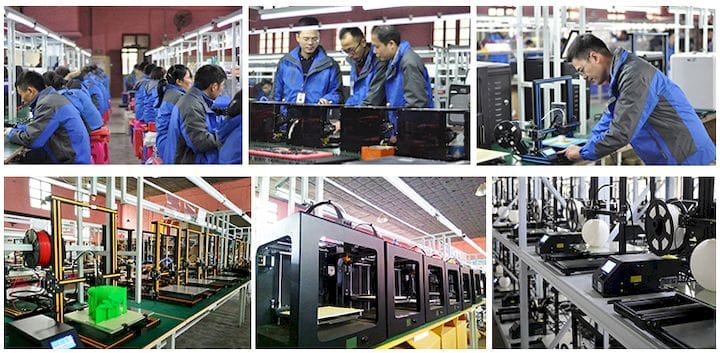![DISWAY is a contract manufacturing brand for 3D printers in China [Source: Dcreate]](https://fabbaloo.com/wp-content/uploads/2020/05/image-asset_img_5eb0921da7b79.jpg)
There’s a secret that many 3D printer vendors don’t want you to know about.
They don’t actually make their machines.
In manufacturing, outsourcing is actually common practice. Economies of scale dictate that concentrated manufacturing is the best approach for efficiency and low costs, and so very often there are far fewer actual manufacturing operations than you might think based on the brand names you’ll see for sale.
You’ll notice this with many consumer products. For example, if you have been shopping for a refrigerator you might have noticed some surprising similarities between models from supposedly different brands. The shelf system might be identical, or perhaps the way the handles attach.
Contract Manufacturing Concept
There’s a reason for this: they actually came from the same factory. Someone once told me that there are only two factories in the world making fridges, and they just have different brand names stamped on them. I have no idea if this story is true, but it likely is to some degree.
The reason for this is that it’s less expensive for the brand owner. A company starting up simply doesn’t have the scale (yet) to establish their own factory, so the work is outsourced to a contract manufacturer to get it done efficiently and cheaply. You probably won’t ever know who the actual manufacturer is, as the item will be prominently labeled with the brand of the vendor.
In some cases the contract manufacturer is so big and efficient (like in the refrigerator example) that the vendor cannot ever be large enough to beat their efficiency and scale.
Does this happen in 3D printing? It most certainly does!
Mcor Technologies Manufacturing
One case of this scenario occurred with the now-defunct Mcor Technologies paper-based 3D printer, the Arke. The Irish company designed a more efficient version of their device, but required a contract manufacturer to build it at scale. They made arrangements with Flex, an experienced European manufacturing service, according to Mcor Technologies’ then-CEO, Conor MacCormack.
Mcor Technologies had to make some changes to the machine’s design in order to enable efficient manufacturing. To do this, they iterated design versions between their engineers and those of Flex until a final design was identified and approved.
This type of relationship goes on for many 3D printer manufacturers, as it is simply a sensible way forward for many smaller operations.
DISWAY 3D Printer Manufacturing
We received an email from one such service in China: Hubei Dcreate / DISWAY, who describe themselves thusly:
“Hubei Dcreate 3D Technology Co., Ltd is a professional manufacturer for 3D printer, 3D scanner and 3D printer filament. Our service is based on OEM, ODM & OBM for a variety of client demands. Each year we produce 3-4 new 3D printers for your choice.”
And:
“We provide OEM & ODM for plenty of famous brands.”
Of course, such relationships are not easy; there is plenty of work required to establish and maintain the engineering relationship between companies, not the least of which is the legal agreements in case something goes wrong.
The next time you use a 3D printer from “Brand X”, it just might have come from a different place than you might have thought.
Via Dcreate / DISWAY











No one seems to offer collaborative 3D printing modes on dual extrusion devices. We explain why this is the case.